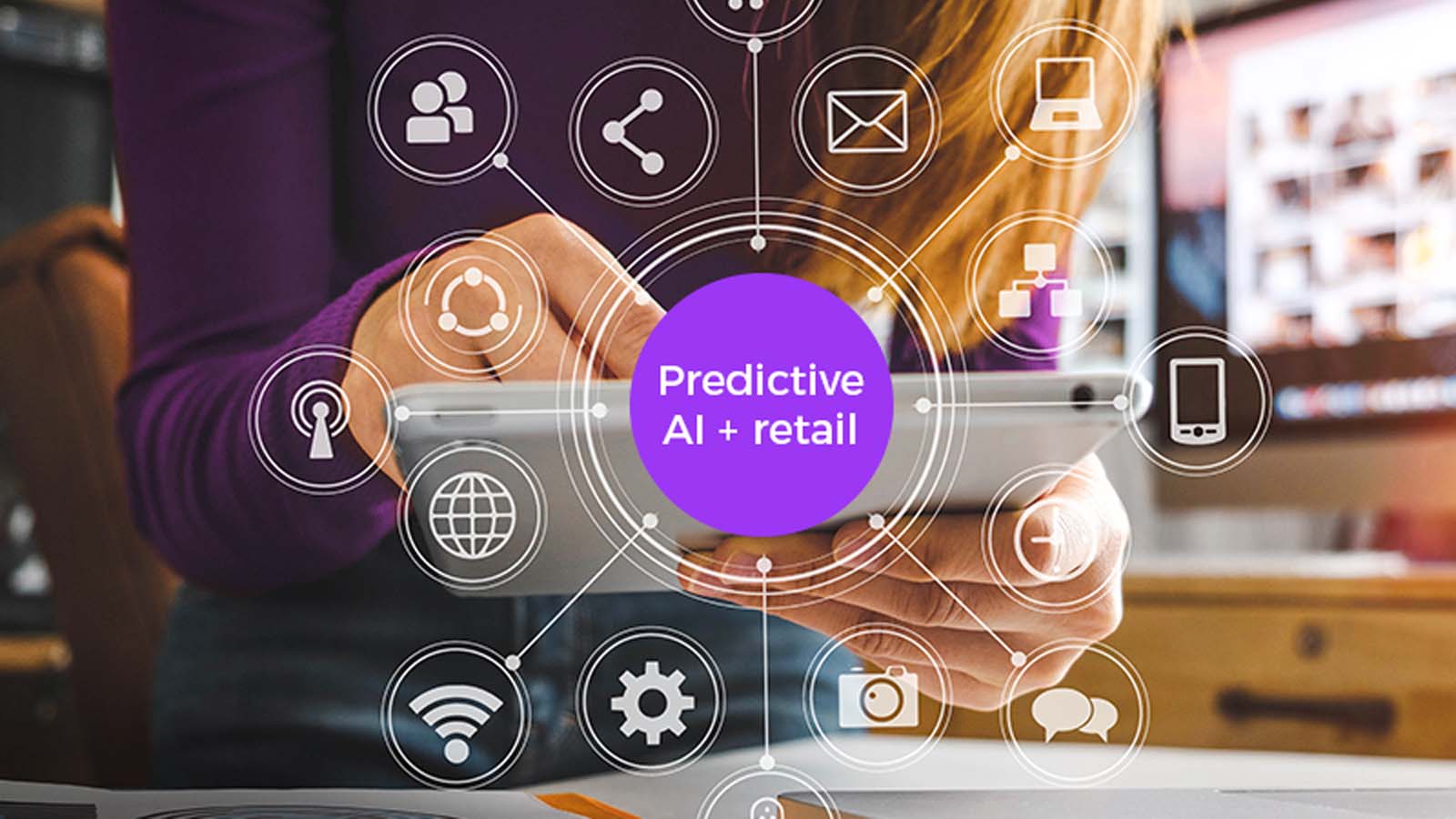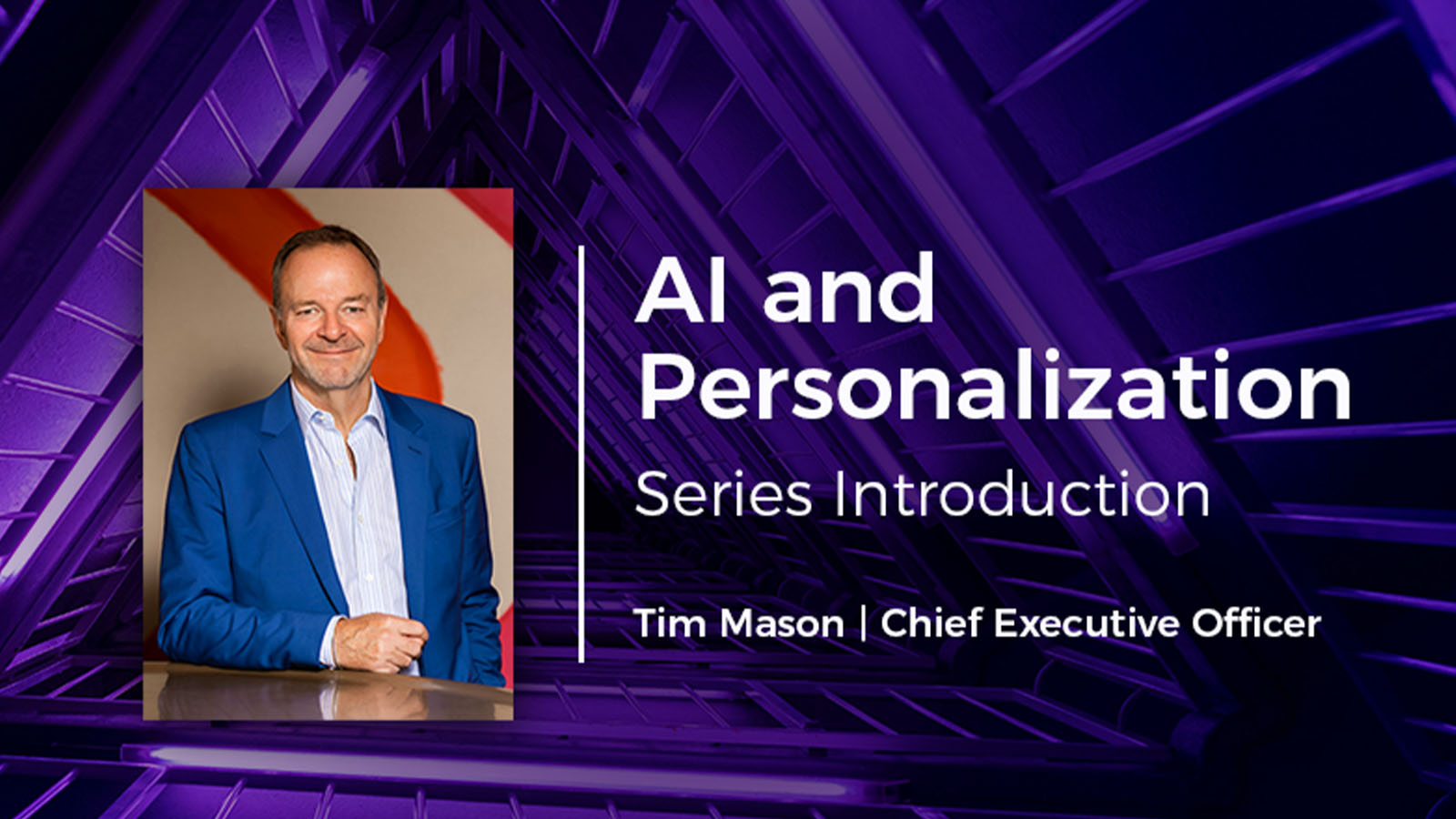9 min read
AI & Personalization: A Series
A series exploring the relationship between AI and personalization in the retail sector, introduced by Eagle Eye CEO Tim Mason
Get the latest insights, research and news delivered straight to your inbox.
Plus, enter to win the 2nd edition of Omnichannel Retail by Tim Mason & Sarah Jarvis!
No spam. We promise. 💜
Featured Case Study:
See how Eagle Eye helped Giant Eagle relaunch myPerks, delivering 25M+ personalized offers monthly and boosting loyalty program ROI.
Contact us to find out how we can enable your teams on our platform.

5 min read
 Jean-Matthieu Schertzer
on
15 April, 2024
Jean-Matthieu Schertzer
on
15 April, 2024

Retailers are rapidly adopting and integrating a multitude of AI-powered tools to enhance many areas of their operations. According to Mordor Intelligence, 40% of American retailers have already adopted AI in some form, and this number is projected to leap to 80% over the next three years. The next frontier will be choosing the right AI solutions that support customer loyalty and retention.
Building an AI-powered tech stack is the first step, but applying AI effectively requires a firm understanding of what customers want and how to influence them. Firstly, what motivates customers to shop with a particular retail brand today?
Our global consumers report, Grocery’s Great Loyalty Opportunity, found that 50% of shoppers said discounts were what they valued most from retail loyalty programs. Although research has found that economic concerns remain the primary driving factor in where people shop, it’s not the only one.
Predictive AI's capabilities can help streamline finding the best deals, but they extend much further to the overall retail journey. A previous article in this AI-focused series, Navigating New Waters: Applying AI to Retail Marketing, as well as our AI eBook, AI and the Current State of Retail Marketing, both explore concepts like personalization at scale and the value of non-offer content. This article explores how retailers can capitalize on AI tools to serve their customers better.
Today, retailers generate more data than at any other point in history and often speak about making data-driven decisions. But most must collect and use even more data to its full potential. For example, only 34% of retailers have implemented automated data collection – a crucial first step to maximizing the impact of customer data.
Even businesses with access to large volumes of data need to leverage that asset effectively. According to the Retail Industry Leaders Association, only 20% of retailers use data analytics to its fullest potential. It’s estimated that unlocking the potential of the data businesses already hold could account for billions of dollars in profits. Figures like these make it clear that retailers are not taking advantage of the data they already have.
Another article in this series, The Current State of Retail Marketing: Where Does AI Fit In?, highlights the need for sufficient data quantity and quality to train AI models. Whether the goal is to deliver complete automation or personalization at scale, the challenges remain largely the same.
Retailers must take an intelligent approach to data science to make their models effective for individualized personalization. Moving to this advanced personalization approach means building a platform capable of delivering offers based not on customer segments but on individual customers and their behaviors. And this is where predictive AI’s capabilities come to the fore.
The right AI tools can harness the data retailers already hold to deliver real-time individualized offers based on thousands of metrics. Additionally, successful AI-powered data analytics creates a virtuous circle whereby AI multiplies feedback and optimizes the data to enhance the accuracy of predictive AI.
Pinpointing a strategy that works is one thing, but scaling it successfully is another. Although AI capabilities can simplify scaling, they rely heavily on high-quality, well-organized data to achieve those results.
Personalization is an excellent example of a highly competitive growth area. Companies that excelled in personalization saw 40% increased revenues compared to competitors that didn’t. This prompts the question, “How can AI help retailers achieve successful personalized marketing at scale and shore up their competitive advantage?”
Under a 1:1 personalization model, retailers deliver real-time offers specifically for the individual. With AI-powered tools, retailers can generate these offers from a near-infinite offer pool and do it instantaneously, at the precise moment that will influence a sale or specific action. These tools use existing data but can also account for contextual triggers to unlock new purchasing opportunities.
Tim Mason, Eagle Eye’s CEO and the author of Omnichannel Retail 2.0: How to Build Winning Stores in a Digital World, highlighted Australian supermarket chain Woolworths’ dedicated digital division, WooliesX, as an example of how this can work. As an early adopter of AI solutions, Woolworths challenged itself to boost its year-on-year growth and solidify its leading market position. The supermarket chain decided to centralize its real-time loyalty system to break the divisions between channels and replace its legacy systems with an AI-powered real-time loyalty system and an offer management platform.
The results were immediate. By centralizing its loyalty functions and offer distribution, Woolworths could deliver economies of scale and provide shoppers with real-time, individualized offers through all its channels. Additionally, with the help of AI and automation technologies, the supermarket chain adopted zero-touch offer creation based on its automated, AI-powered data analytics. The initiative paid off, with the WooliesX team reporting a 1,300% increase in personalized offers delivered and a 14% increase in offer redemption.
Personalization at scale isn’t the only area of retail marketing that can benefit from an AI upgrade; loyalty strategies can also be improved. According to Retail TouchPoints research, 61% of retailers focus on loyalty program points to drive retention and loyalty. Naturally, customers want this process to be simple and engaging rather than a chore. Other than streamlining the earning and redemption process, retailers have turned to gamification to make it enjoyable.
Gamification turns the boring and mundane into something engaging and exciting. It’s why gamification has been estimated to increase customer acquisition by 700%. Another study discovered that gamification features boosted user engagement by 48%.
EagleAI (formerly Untie Nots, a company in the Eagle Eye group,) exemplifies how at-scale gamification initiatives can generate significant results. Using their AI-based gamification solutions, Untie Nots has captured over 60% of the French grocery market.
Predictive AI streamlines engagement operations and learns based on previous results without human input. If customers or loyalty members fail to respond well to an offer or gamification feature, the system will tweak it or try something else. Repeat and multiply thousands of times over; this is A/B testing sent into overdrive.
AI’s role in driving efficiency is nothing new. Retail giant Amazon has been at the forefront of AI applications for some time. In February 2024, Bloomberg reported on Amazon’s new AI-powered shopping tool, Rufus, to help consumers comparison shop and get answers to more complicated queries. This customer experience improvement enables shoppers to skip the time-consuming search engine process and quickly find products relevant to them via an interactive process.
AI-powered shopping tools like Rufus can increase purchase probability using the following process:
These tools primarily accelerate the process of customers entering a store, finding the product they need, and making a purchase. When executed correctly, they help retailers create a more streamlined shopping process while increasing average spend or basket size and reducing cart abandonment. And these efficiency gains extend to retail marketing and the drive enabling a better customer experience. AI and automation combined can deliver smarter promotions.
It can also accelerate the A/B testing process, manage more data points, and make proactive predictions for each customer. As we assert in our eBook, leveraging AI to deliver what customers want when they want it achieves quicker results and faster checkout, making every promotion more cost-effective.
The ability to integrate different technologies to support analytics is also worth mentioning. For example, beauty retailer Sephora uses its augmented reality app Virtual Artist and several AI algorithms to analyze its customers’ facial features and recommend suitable products. Besides boosting the customer experience, Sephora can better predict customers' favorite products.
The efficiency gains derived from AI will inevitably lead to more growth. And with every successful campaign, predictive AI programs only become more accurate and efficient, all due to the data constantly generated by every customer interaction.
While AI in retail is far from critical mass, many opportunities exist for retailers wanting to take advantage of this generational technological development. Retail chains worldwide have already made substantial investments in AI tools for one use or another; Amazon alone announced a $4 billion AI investment in 2023.
Crucially, the benefits of AI have already produced dividends for retailers that have taken the leap of faith. For example, Amazon’s investments in AI features for its cloud computing business have already led to a 7% increase in its share price in February 2024.
AI has shown itself capable of revolutionizing every step of the buying journey and delivering measurable returns for retailers. These advantages come when AI-powered solutions are far from plug-and-play, meaning the true potential for retailers has yet to be unlocked.
Brands investing in AI now are set to position themselves as leaders in their niches, representing billions in potential profits in the coming years.
To read more about AI’s impact on retail marketing, follow the article series and download our new AI eBook, AI and the Current State of Retail Marketing.
Get the latest insights, research, and news delivered straight to your inbox.
Plus, enter to win the 2nd edition of Omnichannel Retail by Tim Mason & Sarah Jarvis!
No spam. We promise. 💜

9 min read
A series exploring the relationship between AI and personalization in the retail sector, introduced by Eagle Eye CEO Tim Mason

6 min read
AI is reimagining the retail experience. Discover how retailers now use predictive AI to deliver advanced personalization and customer engagement.

6 min read
Learn how retailers implement predictive AI solutions to improve offer personalization, generate customer loyalty, and create customized journeys.